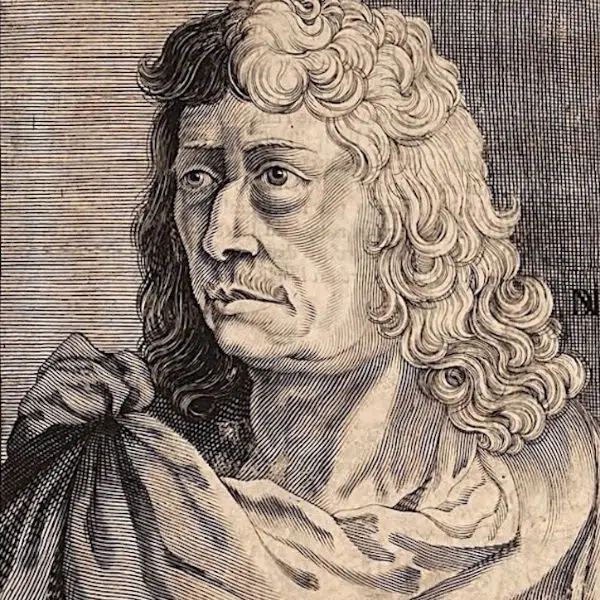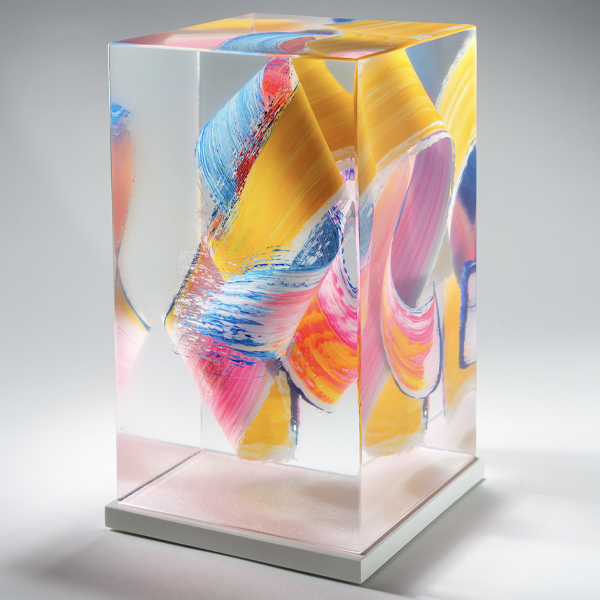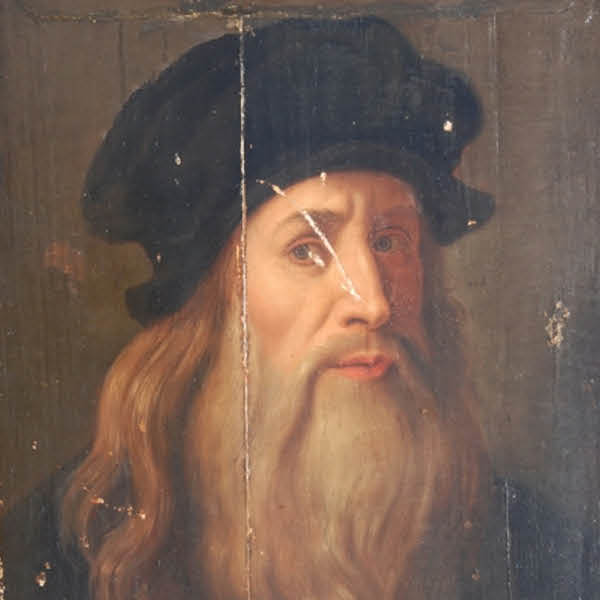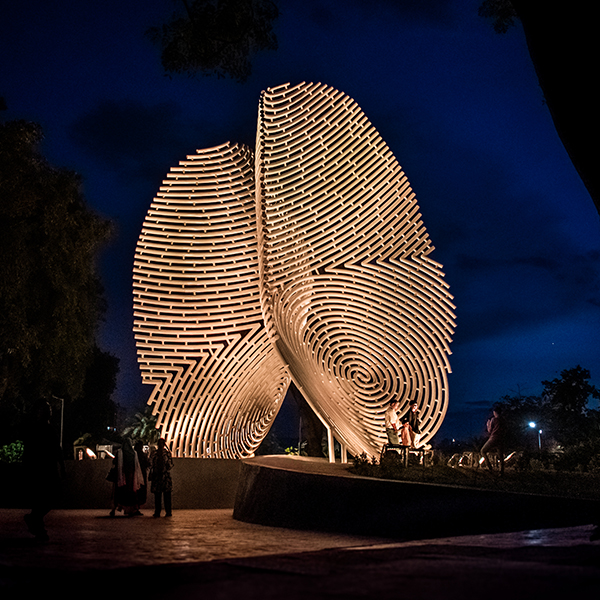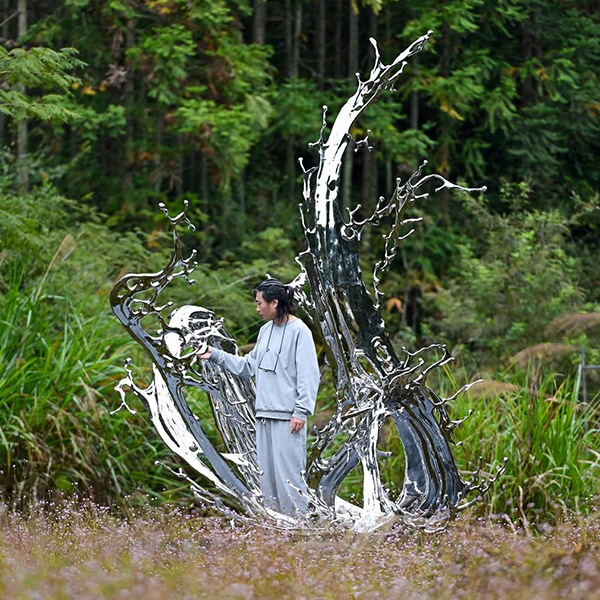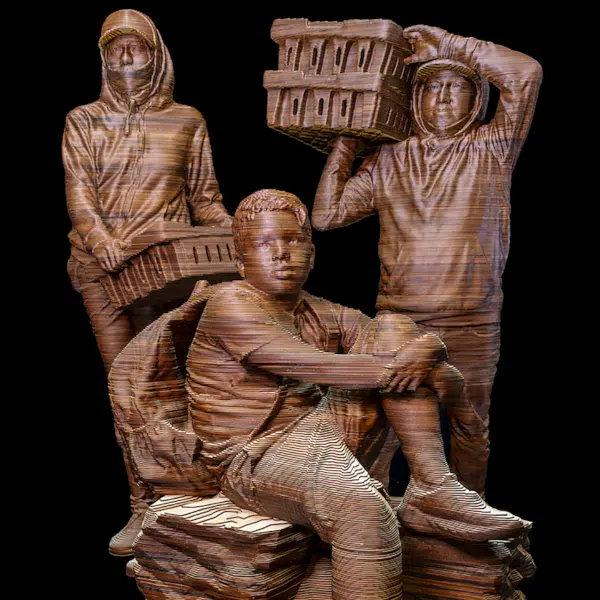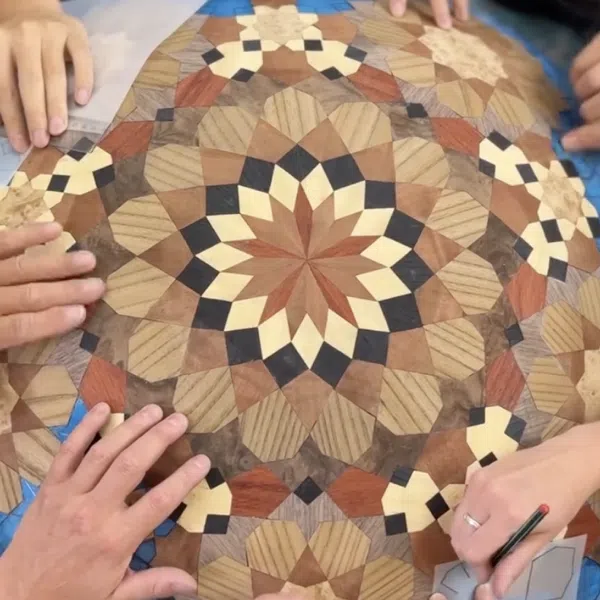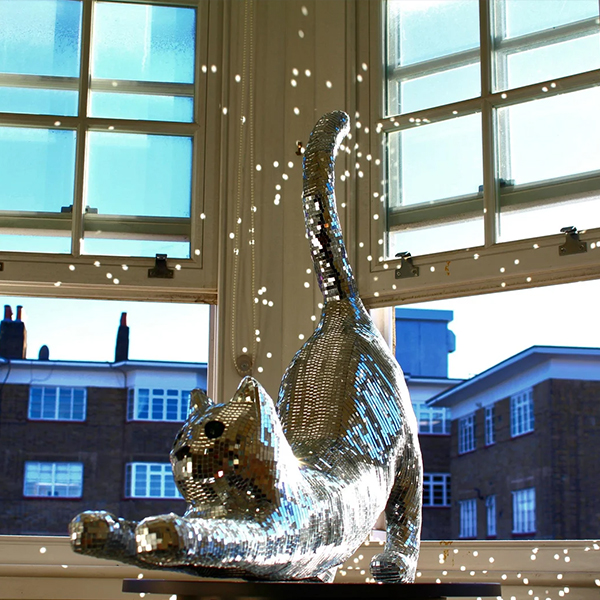View this post on Instagram
Creating art can provide a glimmer of hope during somber times. Many artists from history—such as Frida Kahlo and Vincent van Gogh—produced some of their best works during times of isolation, detainment, or illness. Japanese-American artist Ruth Asawa (1926 – 2013) was one of those creatives who showed resilience throughout her life. Along with her family and other Japanese Americans, she was unjustly detained in an internment camp after the outbreak of World War II in 1942. She was just 16 years old at the time, but despite the hardship, Asawa began to draw and paint.
“Sometimes good comes through adversity,” Asawa reflected in 1994, when she was 68 years old. “I would not be who I am today had it not been for the Internment, and I like who I am.”
Who was Ruth Asawa?
View this post on Instagram
Ruth Asawa was an American artist best known for her intricate, suspended wire sculptures based on organic forms. She was born on January 24, 1926, in Norwalk, California to Japanese immigrants. After the outbreak of World War II in 1942, she was held for 5 months in the Santa Anita race track in California before being sent to an internment camp in Rohwer, Arkansas for the remainder of her 18-month detention period. During this time she met several Disney cartoonists—who were also detained at the camp—who inspired her to begin drawing and painting. Once freed, she spent the rest of her life dedicated to her art, and also served as an activist and mentor in arts education.
Asawa's Life During Internment
View this post on Instagram
After the outbreak of World War II, the American government became paranoid that Japanese Americans would rise up against the country. Although there was no such action to justify their decision, around 120,000 people of Japanese ancestry living in the U.S. were removed from their homes and made to live in internment camps. Of these people, 40,000 were children.
In February 1942, Asawa’s father Umakichi—a 60-year-old farmer who had been living in the U.S. for 40 years—was arrested and taken to a camp in New Mexico. Asawa didn’t see him for almost two years, and she, her mother, and her five siblings were sent to the Santa Anita race track in Arcadia, California. They lived there for five months in two horse stalls. “The stench was horrible,” Asawa recalled. “The smell of horse dung never left the place the entire time we were there.”
Among those detained were animators from Walt Disney Studios. They taught art in the grandstands of the race track, marking the beginning of Asawa’s artistic training.
In September, the Asawa family was sent to an internment camp in Rohwer, Arkansas. Built next to a swamp and surrounded by eight watchtowers and barbed wire fences, it held 8,000 Japanese Americans. “There were lines for everything,” Asawa recalled. “I believe half of our time there was spent waiting in line.” Even the water was unsanitary. “It smelled like rotten eggs,” Asawa remembered. “The only way it was halfway palatable was to boil it and make tea.”
Despite the harsh conditions, Asawa spent the remainder of her confinement period drawing and painting. In August 1943, she was issued an identification card by the War Relocation Authority that permitted her to travel to Milwaukee, Wisconsin. There, she attended Milwaukee State Teachers College, intending to become an art teacher. The young artist, however, faced more adversity. Met by discrimination, she was unable to complete her degree or find a job in teaching.
“I was told that it might be difficult for me, with the memories of the war still fresh, to work in a public school,” Asawa recalled. “My life might even be in danger. This was a godsend, because it encouraged me to follow my interest in art, and I subsequently enrolled at Black Mountain College in North Carolina.”
Life at Black Mountain College
View this post on Instagram
Known for its progressive teaching methods, Black Mountain College put the practice of the arts at the center of the curriculum and made students responsible for their own education. Asawa arrived there in the summer of 1946, and the experience proved to be formative in her development as an artist. She was particularly influenced by her teachers and met architectural student Albert Lanier, who she later married in 1949.
“Teachers there were practicing artists, there was no separation between studying, performing the daily chores, and relating to many art forms,” Asawa said. “I spent three years there and encountered great teachers who gave me enough stimulation to last me for the rest of my life—Josef Albers, painter, Buckminster Fuller, inventor, Max Dehn, the mathematician, and many others. Through them, I came to understand the total commitment required if one must be an artist.”
After leaving Black Mountain College in 1949, Asawa steadily produced art over the course of more than a half-century, creating an impressive body of abstract drawings on paper and sculptures that defined her career.
Asawa’s Wire Sculptures
View this post on Instagram
In 1947, a Mexican craftsman taught Asawa how to weave baskets out of wire, which inspired her own unique structures. Often suspended from the ceiling, her stunning creations are like intricately latticed lanterns and delicate, swelling orbs. Asawa created these works by looping, twisting, and knotting long pieces of wire until the nature-inspired forms were created.
Asawa's own garden inspired the organic motifs found in her work. She explains, “My curiosity was aroused by the idea of giving structural form to the images in my drawings. These forms come from observing plants, the spiral shell of a snail, seeing light through insect wings, watching spiders repair their webs in the early morning, and seeing the sun through the droplets of water suspended from the tips of pine needles while watering my garden.”
Asawa describes her work as “a woven mesh, not unlike medieval mail. A continuous piece of wire, forms envelop inner forms, yet all forms are visible (transparent). The shadow will reveal an exact image of the object.”
Asawa’s work has been exhibited in museums and galleries all over the world. Additionally, the United States Postal Service recently announced that it’ll be releasing ten stamps featuring her looped artworks as a celebration of the artist and her prolific career.
Asawa’s Final Years
View this post on Instagram
Asawa’s legacy extends far beyond her artwork. She believed art belonged to the community and was an essential part of life, so became a major force in founding public arts education for children in San Francisco, where she lived during her final years.
In 1968, Asawa co-founded the Alvarado School Arts Workshop, with her friend Sally Woodbridge. With little more than milk cartons, bits of yarn, and baker’s clay, they created an innovative program that allowed any child (regardless of income) the oppertunity to explore their artistic potential with the help of professional artists. Around the same time, Asawa became a member of the San Francisco Arts Commission, where she was able to persuade politicians and charitable foundations to support arts programs that would benefit young children in San Francisco. The Alvarado School Arts Workshop was brought to 50 public schools in San Francisco, and employed artists, musicians, gardeners, and thousands of parents of pupils.
Asawa went on to join the California Arts Council, the National Endowment for the Arts, and she became a trustee of the Fine Arts Museums of San Francisco. In 2010, the public arts high school in San Francisco was named the Ruth Asawa San Francisco School of the Arts in her honor.
Asawa died of natural causes on August 5, 2013, at her home at the age of 87, but her legacy will not doubt continue to live on.
View this post on Instagram
Ruth Asawa: Website | Facebook | Instagram
All images via The Estate of Ruth Asawa.
Related Articles:
25+ Awe-Inspiring Wire Sculptures That Elevate the Art
Fragmented Wire Sculptures Capture the Complexity of Man’s Inner Psyche
Designer Collaborates With Aboriginal Weavers to Produce Eco-Friendly Lamp Shades











































































